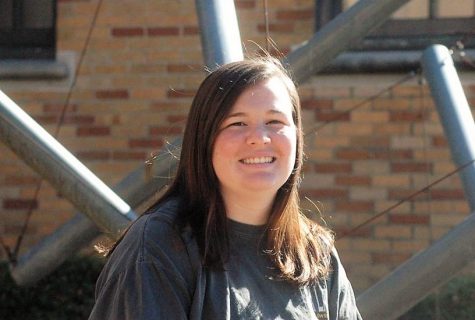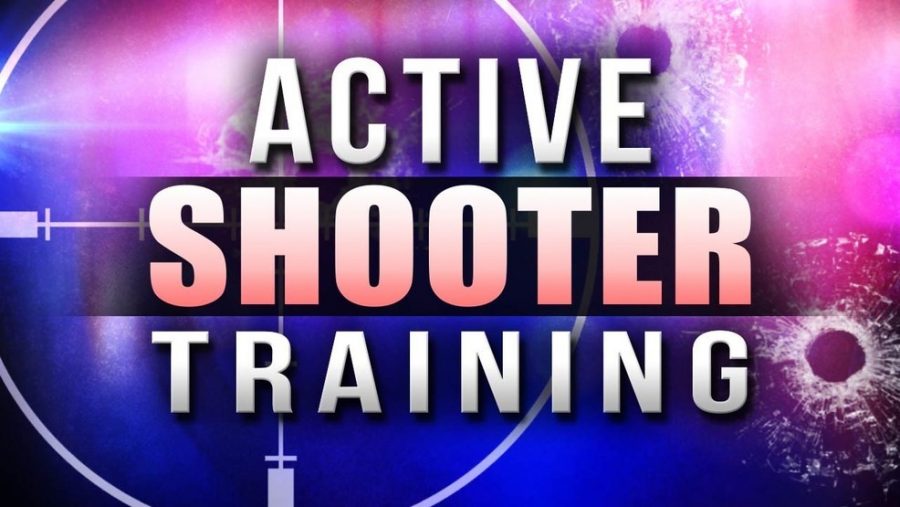Instructional Videos for Active Shooting: No Education Prevention Tactics?
I sit in my classroom management class, chewing my lip as I listen to Dr. Casale explain what we are doing today. She wears a black dress with her signature scarf, though this one is gray, and her signature heels. Her dark hair is pulled back into a ponytail and her glasses are placed firmly on her nose as she explains, Today, we are going to watch the Active Shooter training video that your governor—the Governor of Miss.—has required all state employees to watch.
My head perks up at the mentioning of the video I watched about a week ago that Housing required all resident assistances, desk assistants, and hall directors to complete. While I saw the video in its an entirety, I’m curious how Dr. Casale and my fellow classmates will react to this Active Shooter webcast, especially considering how Governor Phil Bryant issued all state employees were to complete the video after the deadly rise in school shootings in 2018. After watching the webcast, I did feel more prepared to handle the possible scenario of an active shooter, but I remained confused on how the video’s main content helped schools and teachers prepare for an active shooter.
I want all of you to take note of the video as I will ask you some questions at the end, Dr. Casale says, standing behind the computer and pulling up the video.
As she starts the video, I already know that some of my classmates will find it strange that there is nothing relating to school shooting preparation. I peer around the room, noting the groups of students who sit in the same circular formation as always. Conveniently, we ordered ourselves based on our majors: social science, English, HPER, music, and the lone math major.
Confusion sweeps across a few of my classmates’ faces as the narrator explains what workplace violence includes, such as harassment, stalking, property damage, etc. I can practically hear questions already buzzing in their heads, and we haven’t even gotten to the interesting part yet. Why the workplace? Why not mention school violence?
According to the Active Shooter webcast, the top four places where gun violence can occur are commerce, schools, outdoors, or other largely populated areas. The two most common areas are business buildings and schools, which makes sense considering how mass school shootings have become so common and corporate buildings have received a number of gun threats. The video even incorporates a bar graph that indicates workplace active shooters are higher than school shootings, which not only surprised me upon first watching the webcast, but it also made me wonder: Why do we not hear much about corporate buildings that are involved in active shooter cases?
When the narrator mentions the active shooter profile, Dr. Casale pauses the video and addresses us: Is it true that there isn’t a profile for shooters?
My classmates and I look at each other—a majority of us are astounded that there isn’t a standard profile despite the fact that there is one. A girl with brunette hair tied into a bun speaks up, her tone clearly exasperated, Yeah, white males who are most likely straight and affiliate with some denomination of Christianity.
A male student sitting at my table adds, There haven’t been any Muslim shooters, and most of the time a shooting is reported, it’s a white guy.
We all agreed that there is definitely a stereotype when it comes to active shooters, but like other stereotypes, they aren’t always true.
Dr. Casale nods her head and starts the video again. There are a few giggles from myself and other classmates as the narrator mentions, “…in the incident of an active shooter, your survival depends on your ability to act. You should not freeze or play dead…You deserve to survive.”
We turn to each other and can only laugh at the thought of someone playing dead in an active shooter situation, as if the shooter is a rabid bear. Our professor jokes along with us, her own incredulity of the comment makes us laugh some more. Most of the video contains ideas and survival tactics that should already be common sense, but I understand why the narrator mentions that playing dead or freezing will not help keep you alive.
As the video continues, all us learn at least one new thing, such as using computer cords as a way to stop a shooter from coming into the room by wrapping the cords around the door handle. The webcast also talks about ways to render the shooter unarmed in the event that he or she does enter the room.
And yet, as the video comes to an end, Dr. Casale asks us three questions. Did we learn anything new from the video? Does the video complete its task of preparing state employees in an active shooter case? Why or why not? What can we do as educators to protect not only ourselves but our students?
We all agree that there should be more information pertaining to school situations as more school shootings occur. While the video is an attempt to inform and prepare employees for active shooters, there could still be some improvements.
One student asks Dr. Casale what she thought about the video the first time she watched it, to which she honestly replies, “My first reaction was sadness that this type of video is considered training for faculty at a university. I think there are deeper issues that need to be addressed including: Access to firearms, affordable health services (particularly mental health) for faculty, staff, students, and community members. We should have town hall meetings in a variety of communities to discuss possible solutions.”
Dr. Casale is right; there should be much more talk about preparing universities and schools and access to health services for all staff, students, and people from the community. The video could definitely use some improvements, or maybe, the Mississippi State Personnel Board and police departments could join with school and university administrators to create another video strictly for the university or school setting.

Avery Wall is from Greenwood, Mississippi. Considering that Avery tends to be bad with directions, she liked living in her small town but says that small...



